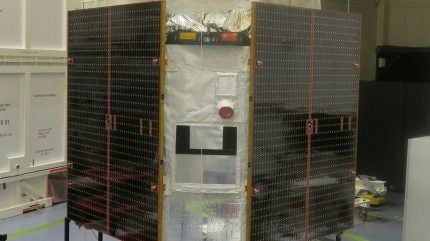
The Airbus-built Earth observation satellite for the French military successfully deployed from the Ariane 6 launcher from the launch site in Guiana Space Centre, Kourou, French Guiana .
CSO-3, part of the French Armed Forces’ Composante Spatiale Optique (CSO) fleet, joins its two precursor satellites CSO-1 and CSO-2 in a constellation designed to deliver high-resolution intelligence data to France’s defence forces and their allies.
It is part of a segment of the broader Multinational Space-based Imaging System (MUSIS) initiative, which is focused on surveillance, reconnaissance, and observation.
In 2010, France initiated a national MUSIS programme, led by the French Defence Procurement Agency (DGA), to mitigate the risk of capability gaps following the end of the Hélios II satellite’s operational life.
This was due to the absence of an agreement on the European MUSIS initiative, which was intended to replace existing systems.
Ariane 6, a new-generation launcher developed by Arianespace in partnership with European Space Agency (ESA), ArianeGroup, and Centre national d’études spatiales (CNES), is designed for modularity, flexibility, and versatility.
Airbus was awarded the CSO contract at the end of 2010 by CNES on behalf of the DGA.
The contract included an option for a third satellite, which was activated after Germany joined the programme in 2015.
As the prime contractor for the CSO satellite programme, Airbus was responsible for providing the platform and avionics, integrating and testing the satellite, and delivering it to CNES.
Thales Alenia Space supplied the very-high-resolution optical instrument to Airbus.
Additionally, Airbus teams developed a customised user ground segment for the DGA, which benefits the French Space Command (CDE) by enabling confidential information distribution and sharing with France and its European partners.
The CSO fleet, featuring a pointing system, offers 3D and very high-resolution imaging capabilities in both visible and infrared bandwidths, allowing for image acquisition during both night and day to maximise operational utility.
The CSO-3 satellite is expected to enhance reconnaissance operations with increased coverage and revisit capability at an altitude of 800km.
CSO-2, flying at a lower altitude, focuses on identification by providing higher resolution images and precision analytics.
Airbus Space Systems head Alain Fauré said: “With each CSO satellite, there may be a new team but the same goal of serving our government customers remains: to provide the best resolution with an agile and secure network. All this, for the intelligence, autonomy and security of our nation.
“CSO-3 is a perfect illustration of what Airbus and the French space industry can do for France and Europe. It is also a great example of what Europe can do when teaming up!”



